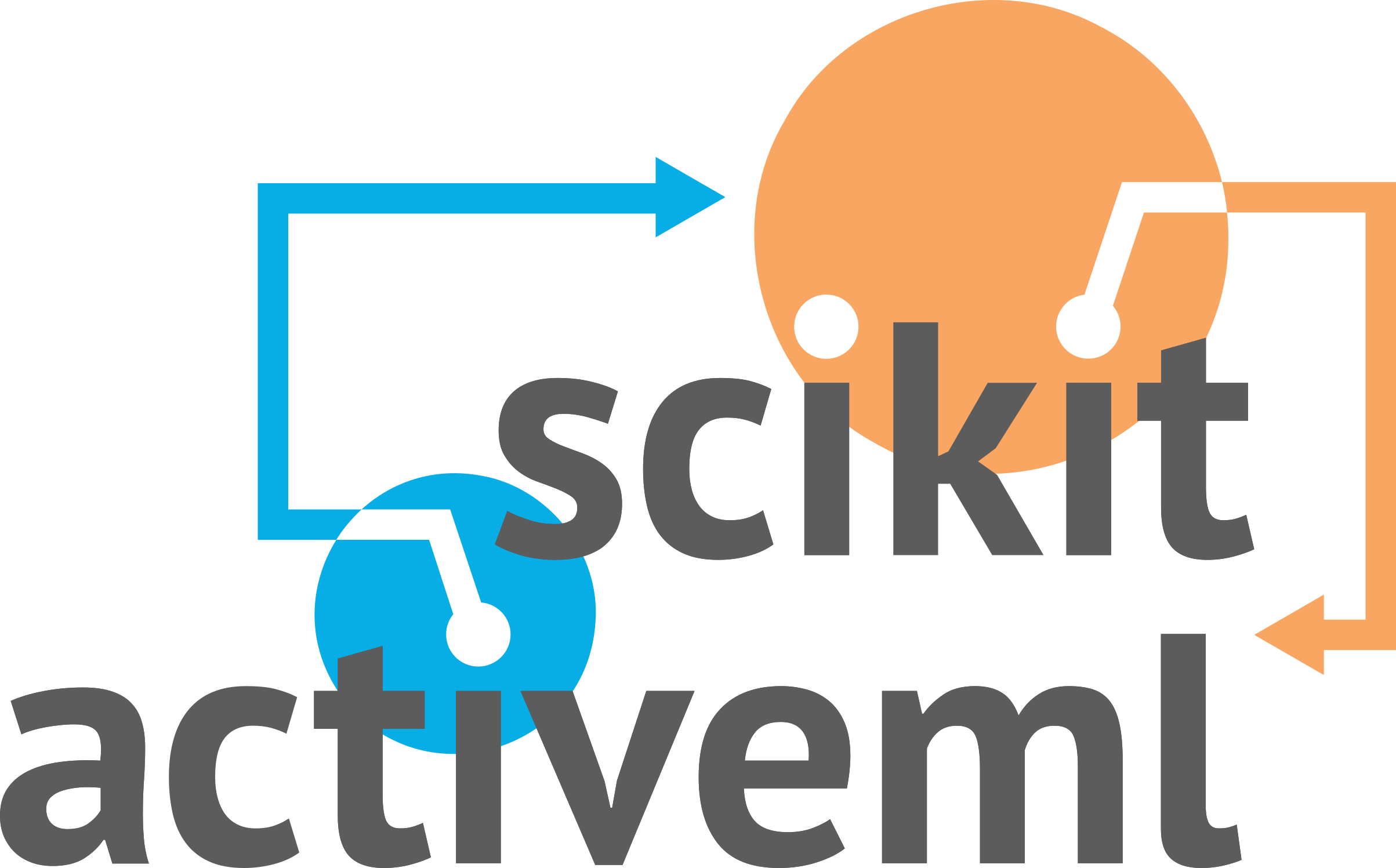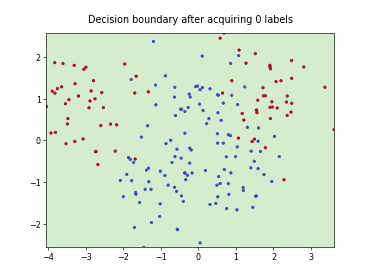CostEmbeddingAL#
- class skactiveml.pool.CostEmbeddingAL(classes, base_regressor=None, cost_matrix=None, embed_dim=None, mds_params=None, nn_params=None, missing_label=nan, random_state=None)[source]#
Bases:
SingleAnnotatorPoolQueryStrategyActive Learning with Cost Embedding (ALCE)
The Active Learning with Cost Embeddings (ALCE) [1] embeds the misclassification cost matrix into a hidden space via non-metric multidimensional scaling (with a mirroring trick for asymmetric costs) and trains a multi-target regressor to predict each sample’s hidden point. It then defines cost-sensitive uncertainty as the distance from the predicted hidden point to the nearest class point and selects the unlabeled instance with the largest distance, directly prioritizing high-cost confusions.
This implementation is based on libact [2].
- Parameters:
- classes: array-like of shape (n_classes,)
List of all classes that can occur.
- base_regressorsklearn.base.RegressorMixin, default=None
An sklearn regression model implementing the methods fit and predict.
- cost_matrix: array-like of shape (n_classes, n_classes), default=None
Cost matrix with cost_matrix[i,j] defining the cost of predicting class j for a sample with the actual class i.
- embed_dimint, optional (default=None)
If it is None, embed_dim=n_classes is used.
- mds_paramsdict, default=None
Parameters passed to sklearn.manifold.MDS.
- nn_paramsdict, default=None
Parameters passed to sklearn.neighbors.NearestNeighbors.
- missing_labelscalar or string or np.nan or None, default=np.nan
Value to represent a missing label.
- random_stateint or np.random.RandomState, default=None
Random state for annotator selection.
References
[1]K.-H. Huang and H.-T. Lin. A Novel Uncertainty Sampling Algorithm for Cost-Sensitive Multiclass Active Learning. In IEEE Int. Conf. Data Min., pages 925–930, 2016.
[2]Y.-Y. Yang, S.-C. Lee, Y.-A. Chung, T.-E. Wu, S.-A. Chen, and H.-T. Lin. libact: Pool-based Active Learning in Python. arXiv:1710.00379, 2017.
Methods
Get metadata routing of this object.
get_params([deep])Get parameters for this estimator.
query(X, y[, sample_weight, candidates, ...])Determines for which candidate samples labels are to be queried.
set_params(**params)Set the parameters of this estimator.
- get_metadata_routing()#
Get metadata routing of this object.
Please check User Guide on how the routing mechanism works.
- Returns:
- routingMetadataRequest
A
MetadataRequestencapsulating routing information.
- get_params(deep=True)#
Get parameters for this estimator.
- Parameters:
- deepbool, default=True
If True, will return the parameters for this estimator and contained subobjects that are estimators.
- Returns:
- paramsdict
Parameter names mapped to their values.
- query(X, y, sample_weight=None, candidates=None, batch_size=1, return_utilities=False)[source]#
Determines for which candidate samples labels are to be queried.
- Parameters:
- Xarray-like of shape (n_samples, n_features)
Training data set, usually complete, i.e., including the labeled and unlabeled samples.
- yarray-like of shape (n_samples,)
Labels of the training data set (possibly including unlabeled ones indicated by self.missing_label).
- sample_weight: array-like of shape (n_samples,), default=None
Weights of training samples in X.
- candidatesNone or array-like of shape (n_candidates), dtype=int or array-like of shape (n_candidates, n_features), default=None
If candidates is None, the unlabeled samples from (X,y) are considered as candidates.
If candidates is of shape (n_candidates,) and of type int, candidates is considered as the indices of the samples in (X,y).
If candidates is of shape (n_candidates, …), the candidate samples are directly given in candidates (not necessarily contained in X). This is not supported by all query strategies.
- batch_sizeint, default=1
The number of samples to be selected in one AL cycle.
- return_utilitiesbool, default=False
If True, also return the utilities based on the query strategy.
- Returns:
- query_indicesnumpy.ndarray of shape (batch_size,)
The query indices indicate for which candidate sample a label is to be queried, e.g., query_indices[0] indicates the first selected sample.
If candidates is None or of shape (n_candidates,), the indexing refers to the samples in X.
If candidates is of shape (n_candidates, n_features), the indexing refers to the samples in candidates.
- utilitiesnumpy.ndarray of shape (batch_size, n_samples) or numpy.ndarray of shape (batch_size, n_candidates)
The utilities of samples after each selected sample of the batch, e.g., utilities[0] indicates the utilities used for selecting the first sample (with index query_indices[0]) of the batch. Utilities for labeled samples will be set to np.nan.
If candidates is None or of shape (n_candidates,), the indexing refers to the samples in X.
If candidates is of shape (n_candidates, n_features), the indexing refers to the samples in candidates.
- set_params(**params)#
Set the parameters of this estimator.
The method works on simple estimators as well as on nested objects (such as
Pipeline). The latter have parameters of the form<component>__<parameter>so that it’s possible to update each component of a nested object.- Parameters:
- **paramsdict
Estimator parameters.
- Returns:
- selfestimator instance
Estimator instance.

